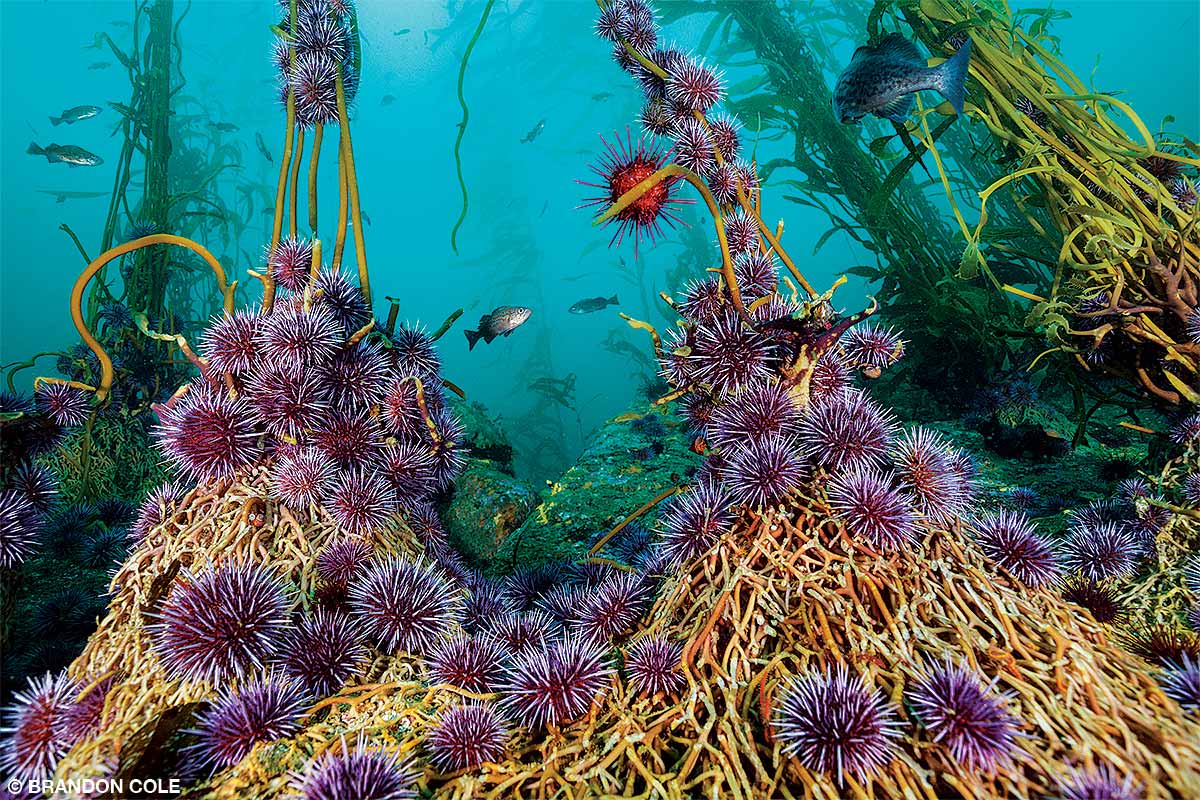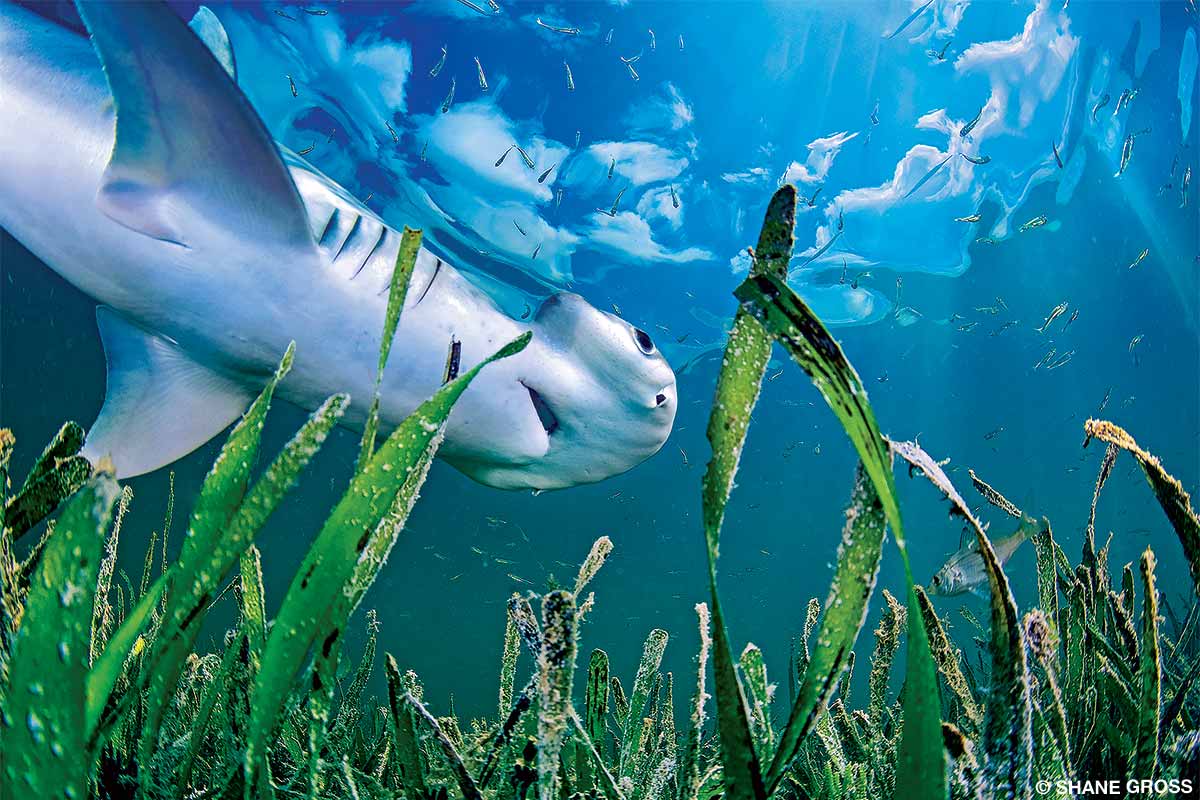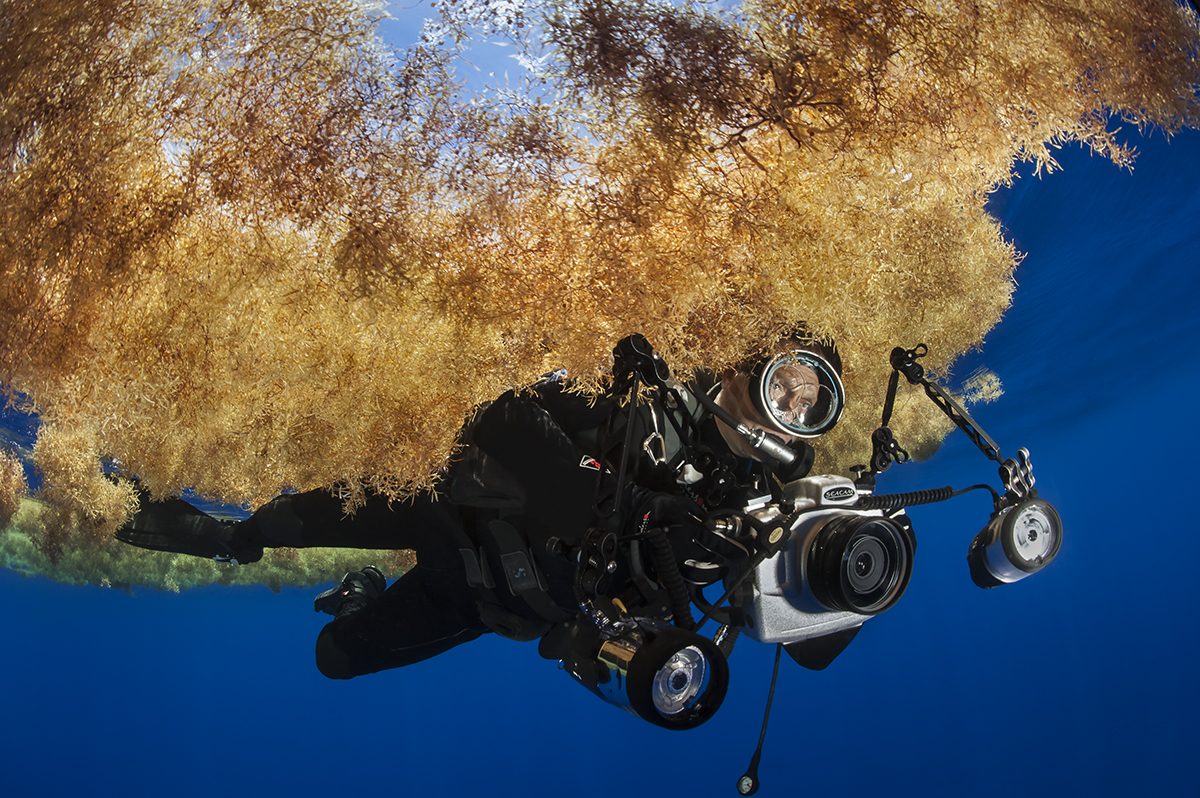For more than five years, divers and scientists along the U.S. West Coast have watched a disaster play out before their eyes. Sunflower sea stars fell victim to a wasting disease, which wiped out roughly 90 percent of the global population in 2013. Seven years later, scientists see no signs of recovery. Without the sea stars, the population of purple urchins that sea stars eat has exploded and mowed down entire forests of bull kelp. The West Coast experienced intense ocean warming from 2014 to 2017, and by 2015 divers began seeing urchin barrens — vast swaths covered in piles of spiny creatures and little else.
The benefits of protecting seagrass cannot be overstated. Seagrass purifies the water, helps protect against coastal erosion, helps sustain small-scale fisheries that support communities, and increases fish populations and biodiversity. It sequesters much more carbon per area than terrestrial forests and reduces ocean acidification. Healthy seagrass means a healthier ocean.
How many times have you noticed the line of weeds out of the corner of your eye and driven past, around, or through it without a second glance on your way to a dive? In our case, most of the time. On a calm day off Jupiter, Florida, a wide weed line at the edge […]
DESCENDING THE LIMESTONE STAIRS OF BONAIRE’S famous 1,000 Steps dive site in full scuba gear is challenging. It’s just 64 steps down, but it feels like many more. Once you make it down, you’re rewarded with a Caribbean reef teeming with life …
TALK TO ANY HUMAN UNDER THE AGE OF 13, and they have probably been asked, “What do you want to be when you grow up?” I was just 3 years old when I knew I wanted to be a veterinarian. Growing up on coasts — first Cape Cod, Massachusetts, and then Southeast Florida — I […]
IT’S NO SECRET THAT CARIBBEAN REEFS ARE IN CRISIS. Many stony coral species face an uncertain destiny, and some scientific predictors point toward extinction in the near future for some species.
In late 2019 the National Oceanic and Atmospheric Administration (NOAA) and a cadre of state, federal, university, and restoration practitioner partners launched Mission: Iconic Reefs (MIR), a two-phased, 20-year, ecosystem-scale restoration initiative for the Florida Keys that focuses on restoring seven high-value, iconic reef systems.
CHARLES DARWIN’S FIVE WEEKS IN THE GALÁPAGOS Islands were crucial to the development of his theory of evolution, likely due to the Galápagos having the world’s second-highest proportion of endemic (unique to one location) species.
SEAFOOD HAS LONG BEEN AN INTEGRAL PART of the human diet, and some people consider it to be an inexhaustible food source.
MARITIME TRANSPORT HAS MORE TO DO WITH CORAL DISEASE than you might think. Just like most animals, corals can get diseases. Researchers first recognized coral disease in the early 1970s. It has increased over time and become a significant threat in many areas of the world.



